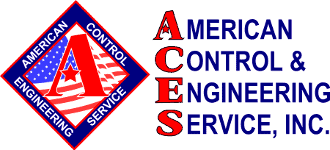THE MYSTERY
An ACES customer manufactures tortilla chips, using a 30-year-old multi-hopper weigher to measure chips for bagging. The machine was faulting and the customer had worked with factory tech support to troubleshoot it themselves, but after replacing $12,000 worth of circuit boards — including the motherboard, CPU and display board — the machine wouldn’t even turn over, and the customer needed it up and running yesterday, so they called in ACES.
THE CLUES
A central gear on the multi-hopper weigher is supposed to engage 14 surrounding motors, one associated with each hopper. The CSI (Control Systems Inspector) on the scene confirmed that the machine would power up, but the main gear wasn’t kicking in at all.
He traced out the wiring for the gear, and found that a contactor was pulling in voltage, but there was no voltage on the bottom of the contactor. Then he removed one of the hopper motors and visually checked to see if it was running — and it wasn’t.
Factory tech support suggested the inverter on the motor was bad. Like a VFD (Variable Frequency Drive), the inverter slowly ramps the signal from 0 to 5 VDC, so that sudden torque from the main gear doesn’t damage the smaller gears on the hopper motor.
The CSI discovered that the inverter had full voltage, but no run command. He attached his source meter to pins 2 and 3 and ramped the voltage from 0 to 5 VCD, and the motor revved up to speed.
This still left the main issue of the central gear not turning. The factory sent updated software, which the ACES’ CSI installed on the new boards — and still the unit would power up normally, but not run. Testing showed that the cable, inverter and motor were all fine. Tech support theorized that the motherboard was bad, even though it had just been replaced.
The CSI knew this was a mission-critical piece of equipment for the customer and didn’t want to wait overnight for more parts to arrive. He reasoned that the motor at least ran with the original boards, so decided to reset everything back to the original boards and software. (Fortunately all the old settings were still intact.)
Next, he performed a system drain, which opens all 14 hoppers to shake out the chips, and resets the weight to zero. The machine failed on system drain: The calculation screen was showing a weight of 800 grams in each empty hopper.
THE PERP
This led the CSI to inspect the analog-to-digital converter board (AD board). He pulled it out for closer scrutiny, which revealed that the board was embedded with salt from the tortilla chips. Not only is salt corrosive, but also absorbs moisture from the air — in this case shorting out several circuit chips on the board.
THE SOLUTION
Working with his tiniest screwdriver and gently applying compressed air, the CSI cleaned out the AD board. He reinstalled the board and in short order was able to zero out all the hoppers except for number 10. He changed out the drive board on the back of that motor, which resolved the issue.
After a 5-minute test, everything was running smoothly and tortilla chips were flowing through the hoppers once again.
After all the troubleshooting and swapping out of boards, it turned out the problem was salt in the AD board, and one bad motor drive board. The customer shipped back all the new circuit boards and got a refund of their $12,000.
ACES made a recommendation for the customer to open up the machine and clear it completely of salt and chips — and to repeat the procedure once a month to keep their equipment running smoothly. This is one of many instances ACES has resolved where foreign bodies interfered with machine operations. To read more, go to the foreign matter case files.
